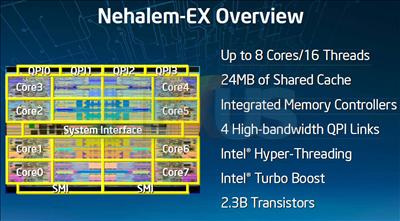Targeting the RISC market
Apart from the number of cores, there are a number of other features Intel wanted to bring to everyone's attention, as well as new reliability, availability and serviceability (RAS) features usually associated with its Itanium processor family, such as Machine Check Architecture (MCA) Recovery.
While the ‘Tukwila' generation of Intel's Itanium, high-end server processor continues to be delayed, Intel claims it is continuing to take market share from high-end RISC server processor makers like Sun Microsystems. It puts this down to a lower cost of ownership.
The only availability guidance offered was that the Nehalem-EX is scheduled for production in the second half of 2009.















